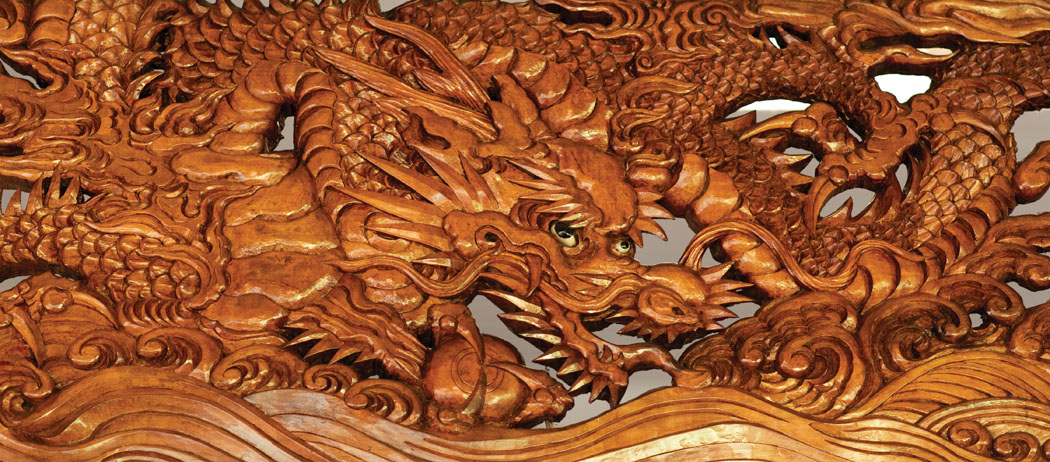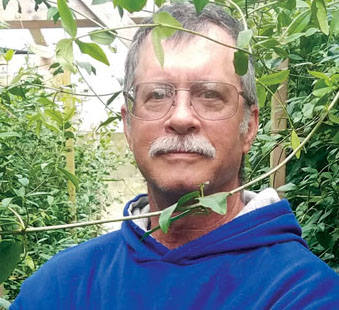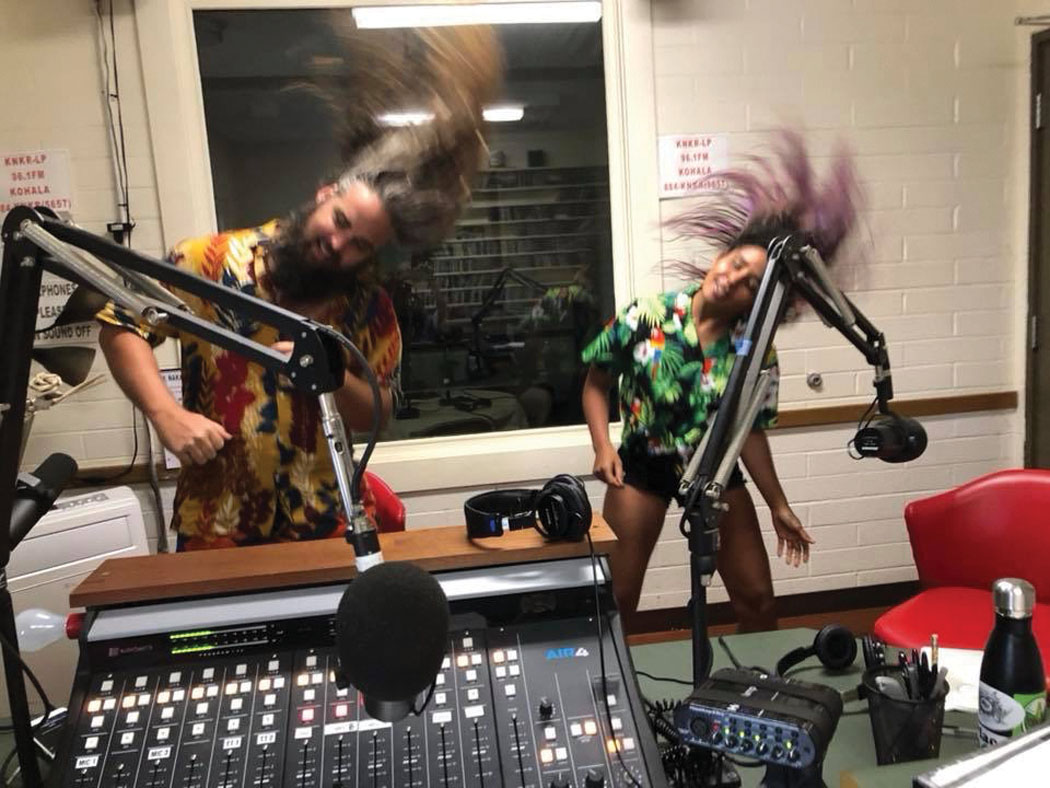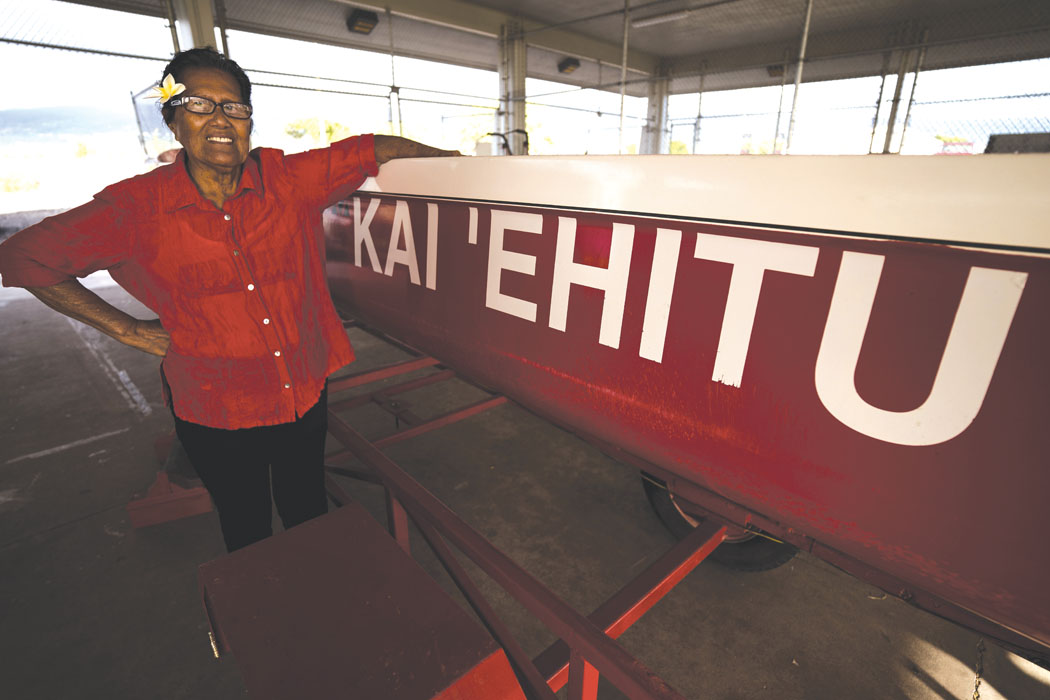
Kai ‘Ehitu: An Outrigger Team Remembers Its Roots and Its Papa

By Sara Stover
“Never forget your roots,” Puamaile Kimitete insists. Her mother Augustine, sister Healani, and brother Richard all nod their heads in agreement. “Even though he lived in Hawai‘i for over three decades, Papa never forgot his Tahitian roots.”
It is here, in front of Kai ‘Ehituʻs fare va‘a (canoe house), that she can best reflect on how her fatherʻs decision to move his young family from Tahiti grew into a canoe club that impacted the very culture of Hawaiian canoe racing.
“This property was overgrown and in need of some love when it was given to us. Mama and Papa cleaned it up and planted the noni tree,” she says.
Brought by ancient Polynesians to Hawai‘i, noni trees were one of the original canoe plants, making them a fitting addition to Kai ‘Ehitu’s first home. In many ways, it was the canoe that brought the Kimitetes to Hawai‘i.
The Art of Carving
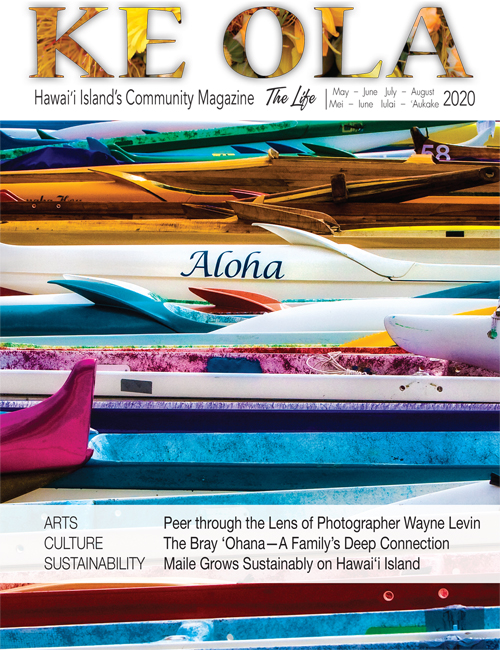
In 1940, Bernard Pierre Kimitete was born in Hatiheu Nuku-Hiva, Marquesas Islands to Utunaiki and Adelaide Kimitete. Utunaiki served as chief of police in Pape‘ete, Tahiti, simultaneously refining his skills as a renowned woodcarver. Raised in Pape‘ete, son Pierre grew up to be a talented sportsman, playing soccer and boxing. He also possessed a genuine kindness that won the heart of a beautiful young woman named Augustine, whom he married in 1964.
Pierre learned the art of carving and canoe building from his father, skills which would eventually open doors for the Kimitetes to journey across the ocean. In the early 60s, the Bishop of the Church of the Latter Day Saints contacted Utunaiki, asking for advice about building a Tahitian village on O‘ahu intended to be part of what would become the Polynesian Cultural Center. He agreed to spend some time on O‘ahu assisting with the preparations, and suggested Pierre join the other talented craftsmen in building the new village. Pierre, his wife Augustine, and their young sons Robert, Richard, and Joseph moved to Lā‘ie, O‘ahu in 1962.
A Legacy of Exploration
The Polynesian Cultural Center featured traditional canoes from its opening. Skilled artisans were commissioned to carve many of the center’s canoes, including Pierre. During the Kimitetes’ time at the center, he carved tiki, pahu drums, paddles, and canoes, while Mama Augustine weaved lauhala mats and coconut baskets, and sewed lei and costumes for the entertainers. Merging passion with talent, Papa’s most beloved piece was a large stone ti‘i (tiki) carving of a woman and two children representing Augustine and sons, Robert and Richard.
In 1965, Elvis Presley filmed several segments of his movie Paradise Hawaiian Style at the cultural center. Papa’s talents as an entertainer led to his appearance in the movie, playing drums on stage next to Elvis in the “Drums of the Islands” segment.
While in Lā‘ie, the Kimitete family welcomed two daughters, Healani and Puamaile, into the family. The parents continued to pour their hearts into ensuring that the center flourished.
A Big Choice
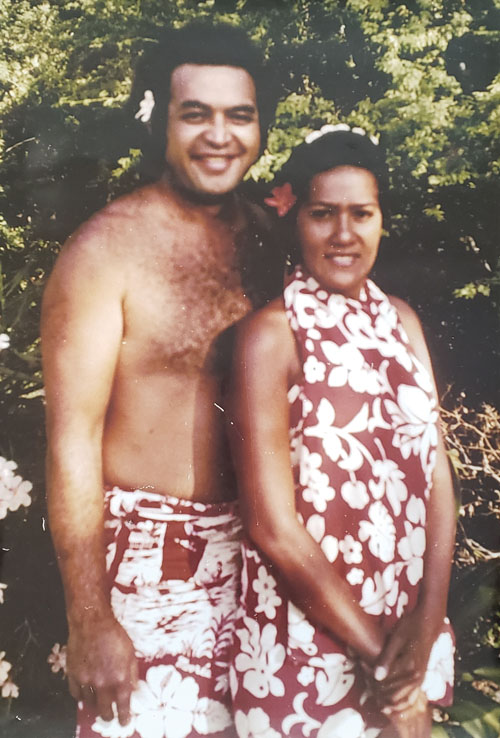
Around 1970 Pierre’s distinguished reputation as a master woodcarver got the attention of both Disney World and the Kona Village Resort. He and Augustine gave their children a choice: move to Hawai‘i Island or Florida. The decision was unanimous, and in 1971, Kona Village Resort became their new home. It was here that the Kimitete children spent their most formative years.
Built like a traditional Hawaiian village, the resort offered guests a vacation from phones and TVs. The Kimitete children took the guests’ children fishing and taught them how to pick ‘opihi and coconuts while their parents worked. In turn, the young tourists taught the Kimitetes English.
Pierre, who would come to be known as Papa, instructed the other workers and carved stunning tikis, including a 40-foot high figure made of driftwood. Mama was responsible for arts and crafts and sewing lei during the day, and helped Papa with the Polynesian entertainment at night. The family formed the Kimitete Polynesian Review, which was performed exclusively at Kona Village.
“If Papa found out that a guest wanted a lū‘au, he would put one on out of the goodness of his heart,” Puamaile recalls.
“Kona Village was our home base, with its sand and the ocean. The lava field was our playground,” recounts Richard. “We were the original Kona Village kids. Everyone knew us. Everyone got along,” Healani adds. “As young children, everything was good in our world!”
Rain or Shine
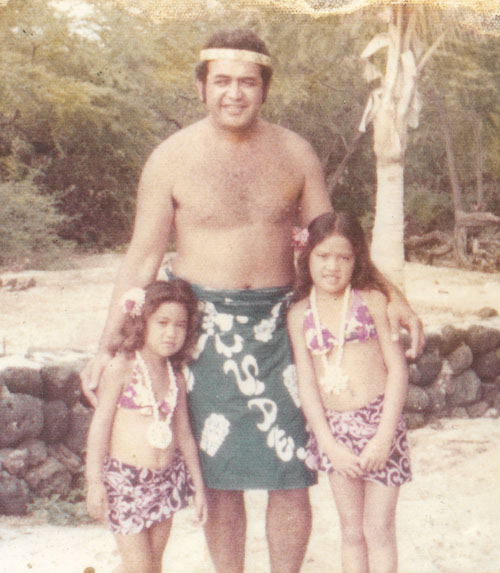
After about seven years, the Kimitetes moved out of Kona Village and the children began attending school at Kealakehe and Konawaena.
“There were no other Tahitian families at school, but everyone welcomed us,” Richard notes. There was also no Konawaena High School soccer program, a deficiency that Papa would soon remedy.
Soccer was a fundamental aspect of Papa’s adolescence and he wanted other youth to experience it, so he developed a soccer program.
“I’ll never forget that first day of practice,” Richard says, laughing about the day he waited with Papa for their soccer hopefuls to arrive. “With the exception of one guy, everyone showed up in slippers, work boots, or barefoot!”
While most of the potential players were coffee pickers and fishermen’s sons with no background in team sports, Papa accepted them all…and devised a plan.
“For the first month of soccer, there wasnʻt a ball in sight. Papa had us spend our time on conditioning and drills. And it worked!” exclaims Richard. By the end of their first year as a team, Konawaena won the Big Island Interscholastic Championships, an accomplishment that they repeated 10 years in a row.
“Papa was coaching soccer until the day he passed away in 2002. Nothing stopped him from doing what he loved, and he loved sports,” Puamaile says with a smile.
It was with this same dedication that Papa Kimitete coached the Kauikeaouli Canoe Club paddlers. As a craftsman who built racing canoes for clubs across the state, Papa was no stranger to outrigger racing. He was one of only a few Tahitian canoe builders to carve wa‘a, ‘iako, ama, wae, hoe, and other canoe parts.
“Today we still have two of his original wa‘a [canoes] with us,” says Healani. “The Heipualani, which is named after Puamaile and me, and the Vai Tiare.”
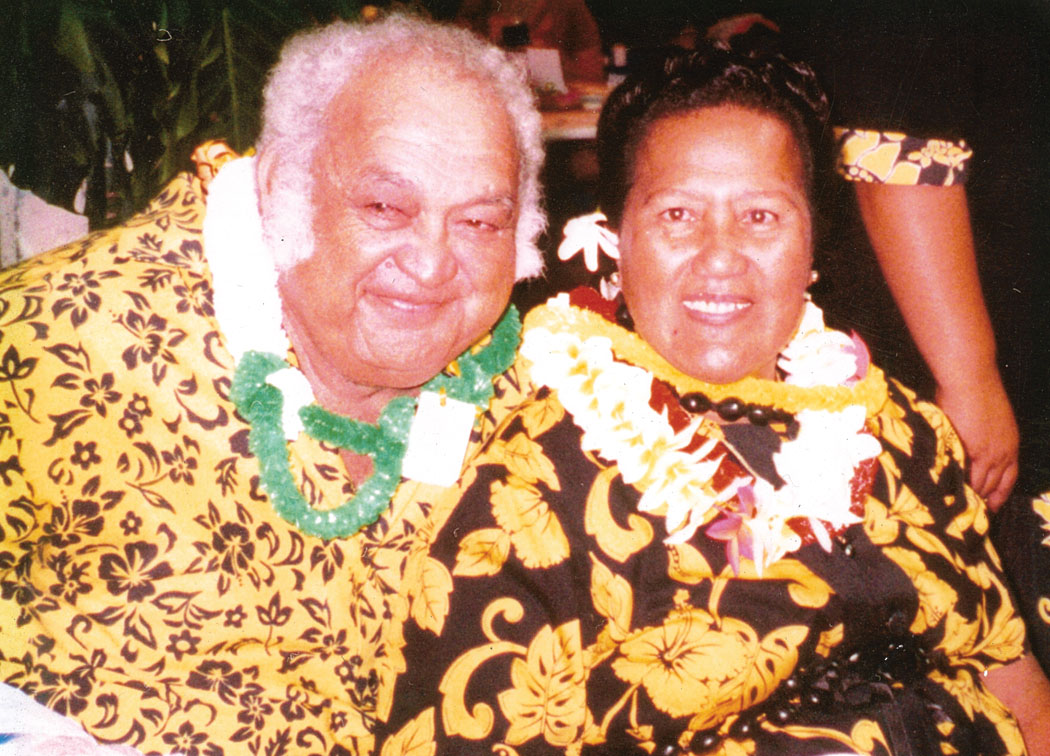
Branching Out
Now home of the Keauhou Canoe Club, Keauhou Bay was home of the Kauikeaouli Canoe Club before the new club’s inception. “Its name pays tribute to the birthplace of King Kamehameha III, whose birth name was Kauikeaouli,” Healani explains. It was here that Papa first embraced the role of head paddling coach for his sons and other hānai paddlers.
“That club was the piko, but Papa dreamed of branching out and reaching more youth,” explains Puamaile. Papa didn’t just breathe life into each canoe he carved. He also breathed life into this dream, officially founding the Kai ‘Ehitu Canoe Club with his ‘ohana in 1982, and imparting a lifetime of values to thousands of youth and adults.
Meaning “Seven Seas,” the name Kai ‘Ehitu is also a nod to the theory that the seventh wave in a set is the best. For the logo, the team settled on a representation of their roots—the Kimitete’s family crest, carved by Grandpa Utunaiki himself.
“Papa served as Kai ‘Ehitu’s president, but really, he was everyone’s Papa,” says Richard of his fatherʻs ability to use sport as a means of offering ‘ohana to kids who had nowhere else to go.
“He and Mama took everyone in, no matter their background. The love in their hearts extended to the community,” he continues. “They used Kai ‘Ehitu as a platform to teach perseverance, the importance of setting goals, and always fulfilling oneʻs dreams.”
With a new outrigger team came new dilemmas, including finding a place to house the canoes. Mayor Dante Carpenter (in office 1984–1988) offered a building at Old Kona Airport Recreation Area to Kai ‘Ehitu. The facility needed to be cleaned and the yard cleared, so Mama and Papa worked hard to transform the building into a fare va‘a.
“Papa wasnʻt just talented, he was kind. He would lend out canoes. He would use the old fare va‘a to host birthdays, weddings, and graduation parties,” Richard says. “The Kai ‘Ehitu fare va‘a became a gathering place for many. Everyone has memories of Mama and Papa sitting under that noni tree.”
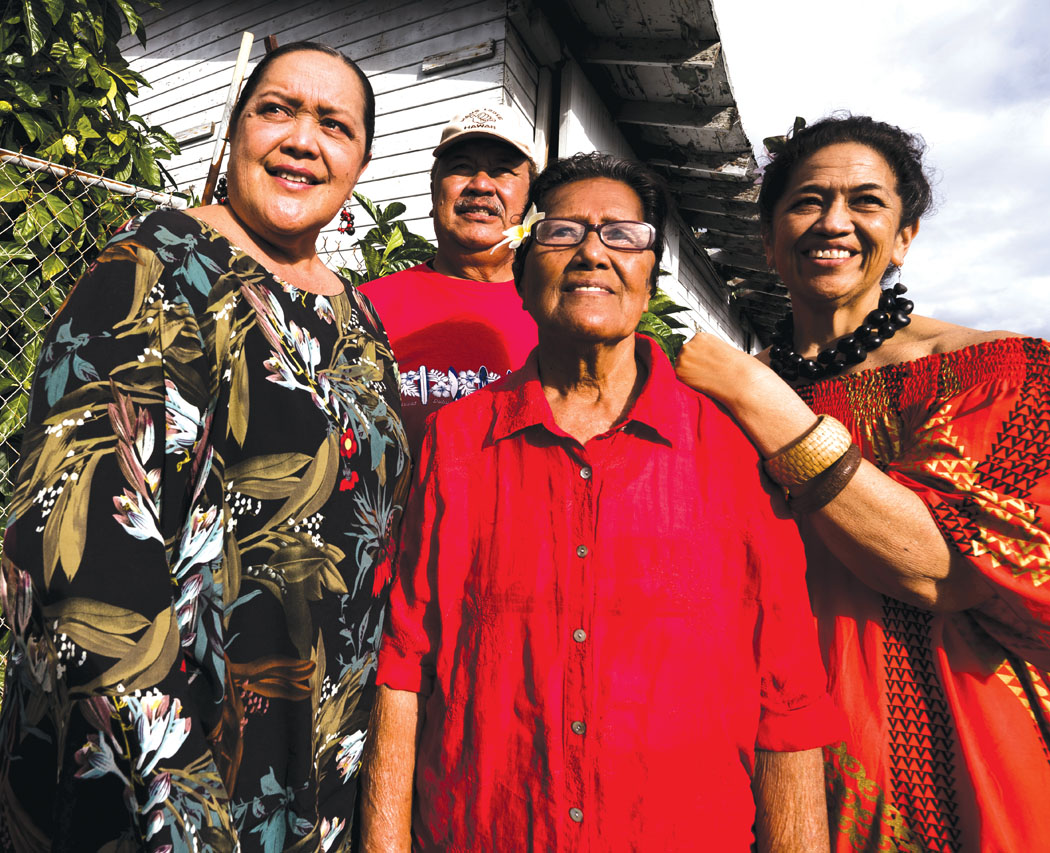
Planting a Seed
Since 1982, the Moku O Hawai‘i Outrigger Canoe Racing Association has opened the regatta season in May with the Papa Kimitete Memorial Regatta at Kailua Bay. The race celebrates Papa’s life and his dream lives on through Kai ‘Ehitu.
“Because our roots were in Tahiti, our parents started the canoe club to ensure that we had a foundation here in Hawai‘i, no matter what,” Healani says.
“We are living what our parents taught us, representing the whole family, country, and Polynesian people everywhere,” Puamaile points out. “And remembering our roots. We cannot grow without strong roots.”
With around 285 members, the club has indeed grown. Over the past few years, Kai ‘Ehitu’s menʻs and women’s divisions have grown stronger. What truly sets Kai ‘Ehitu apart, however, is its strong youth program, and Papa wouldn’t have had it any other way.
“From day one, we have been family-oriented, teaching both kids and adults. That has allowed us to grow,” affirms Richard.
Kai ‘Ehitu continues to teach Tahitian technique fused with Hawaiian paddling style. Conditioning remains a key element to Kai ‘Ehitu’s program, as well as caring for the youth.
“Care for the kids. The adults will be fine, but the kids need guidance. That’s what Papa always said and that’s why the youth are still Kai ‘Ehitu’s priority,” explains Richard.
The noni tree planted by Mama and Papa continues to grow and thrive, as does the club. Its values remain the same and its roots are never forgotten.
Soul Paddling
At a time when much of the world of sport emphasizes prize money and fierce competition, Kai ‘Ehitu cultivates soul paddling. Its paddlers are taught to value the process over the results and honor connection over competition.
“We need the people with that competitive fire,” Puamaile concedes. “We leave the competition in the water though. On land, weʻre ‘ohana.”
At the heart of Kai ‘Ehitu is a respect for the ocean and a shared belief that the canoe is a sacred vessel.
“Canoes connected the ancient world and brought it together. Papa carved canoes. That’s what brought us here,” says Puamaile, her ‘ohana nodding their heads in agreement. “To perpetuate the art of canoe paddling is to perpetuate connection.” ❖
For more information: kaiehitu.org
